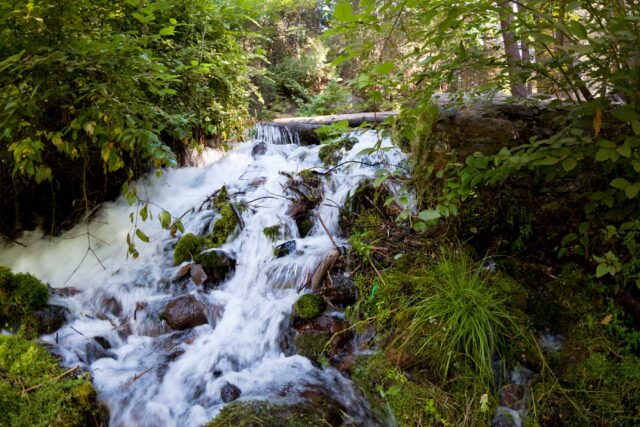In spring 2021, PPIC organized seven focus groups to explore how to pay for headwater forest management. This work was led by PPIC in collaboration with Van Butsic, Heidi Huber-Stearns, Erin Kelly, and Ryan Tompkins. This is the second post in a series of four.
In August 2020, the state of California and the US Forest Service (USFS) agreed to vastly increase the number of forested acres they treat with mechanical thinning and prescribed burning each year. The agreement aims to reduce the risk of wildfire and improve forest health, and it came as California confronted a record-breaking wildfire year, exacerbated by drought and a dangerous build-up of fuel in the state’s forests. The new goal represents a doubling of effort by the USFS and a nearly five-fold increase in state-funded management work by 2025.
One of the hurdles to realizing this goal is cost. The net cost of mechanical thinning in the Sierra Nevada—the removal of small diameter trees that increase wildfire risk—varies widely, between $500 and $1,900 per acre. The role of wood products as a potential revenue source arose repeatedly in our focus group discussions.
Wood products could diversify the funding portfolio for mechanical thinning, stretching state dollars and getting more acres treated. Stimulating wood products industries could also boost economically distressed rural communities by generating revenue for local businesses and leading to additional opportunities for workforce training, employment, and earnings across the forest sector.
The costs of treatment depend partly on the ability to realize value from wood products. Our previous estimates suggest that thinning could even generate a net revenue if operators are allowed to harvest more high-value, mid-sized trees.
As policymakers evaluate next steps in this area, it is important to consider these takeaways and some key recommendations:
- Find ways to conduct ecological restoration that generates revenue. Policymakers have focused on stimulating new markets for small-diameter trees—which is promising but several years away from being viable. In the meantime, ecological thinning efforts could adapt concepts from timber harvest, which uses similar equipment and techniques, to meet ecological goals. Some forms of timber harvest replicate the mosaic of variation in tree size, age, and species that improves forest resilience. Cal Fire should allocate a portion of state forest health funding to test this concept.
- Invest in wood products workforce training and infrastructure. Many rural communities currently lack the infrastructure (sawmills, biomass energy facilities) and workforce to support an expanding wood products sector. The state is beginning to address this problem, carving out $25 million in early spending from the General Fund for workforce development and loans to businesses that make use of wood harvested as part of management work. State agencies should make a concerted effort to ensure that these investments result in measurable economic benefits. A multi-year commitment of funding to forest economic stimulus—rather than one-time General Fund spending—would help achieve intended results.
- Buffer against volatility in wood product markets. Expanding the role of wood product utilization and markets in forest health has benefits, but it also brings risks. As the state explores more wood product market opportunities, the Office of Planning and Research should work with timber sector representatives to develop options for buffering against volatile market dynamics. For example, direct subsidies to landowners for mechanical thinning could keep materials flowing to end-use facilities even when national or global prices for lumber fluctuate.
Proactive headwater forest management aims to develop healthy, resilient forests that reduce wildfire intensity and air pollution, and support wildlife and clean water. While the state has greatly increased funding for this purpose, public dollars will only go so far—and they won’t last forever. Forest product utilization needs to be part of sustainable forest management. Making use of the wood products from mechanical thinning is a promising way to pay for the work that needs to be done. The approach will be most effective when stakeholders find common ground on ecological issues; the state can help by providing up-front investments to catalyze new markets. When these pieces align, the result will help rural communities rebuild around a green economy.






